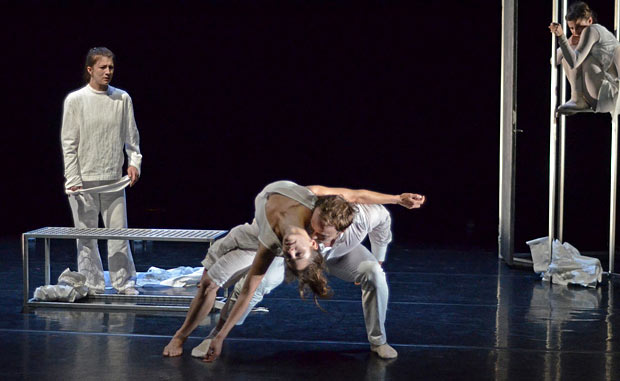
© Dave Morgan. (Click image for larger version)
Bern Ballett/Cathy Marston
Witch-hunt
London, Royal Opera House, Linbury Theatre
22 May 2013
www.cathymarston.com
Bern Ballett at konzerttheaterbern.ch
Interview with Cathy Marston about Witch-hunt
Gallery of Witch-hunt pictures by Dave Morgan
The more I think about Cathy Marston’s Witch-Hunt, the more I admire it: this is her last piece for the Bern Ballett, and if her successor can produce work as intelligent, well-structured and emotionally engaging as this, both the company and its audience should think themselves fortunate.
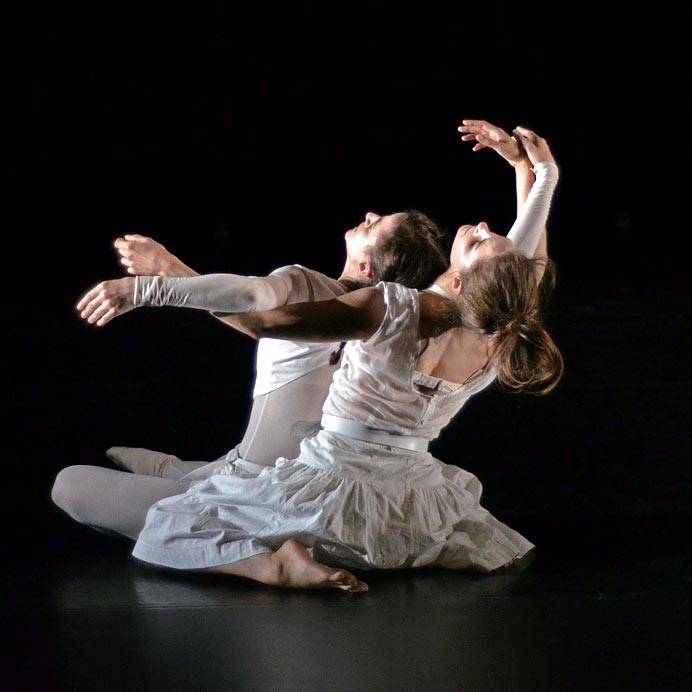
© Dave Morgan. (Click image for larger version)
Of course that’s not to say Witch-Hunt is faultless. Marston has a strong tale to tell but rather than treat it directly she give it a double twist – an intriguing approach but one which sets her a number of problems which she doesn’t entirely solve. It’s a true story from 18th century Switzerland, of a young woman called Anna Göldi who was tortured and executed after being found guilty of bewitching an 8-year-old girl: then, only 5 years ago, and after a long campaign, she was officially exonerated by the Swiss justice system. Good news, perhaps, but Marston sees the question that decision brings in its wake: if Göldi was innocent, what does that say about the child who accused her? So the work is driven by the angry spirit of that long-dead child, insisting on the truth of her own experience – an actress (Mona Kloos) speaks for her, in words written by Marston’s collaborator Edward Kemp.
Then, Marston chooses to takes us through the historical events three times, each time going further beneath the surface in search of a rational explanation of what happened. Her challenge is to hold our interest as she develops her case: there were moments when I doubted she would bring it off, but in the end it worked. The last time round, when we get to the truth (or as near as Marston is going to bring us to the truth), the relationship between Göldi and the child’s father – only hinted at in the earlier iterations – finally becomes explicit in a blazing pas de deux, one of the most powerful I’ve ever seen in this house, and that somehow makes sense of everything that has led up to it, both dramatically and structurally.
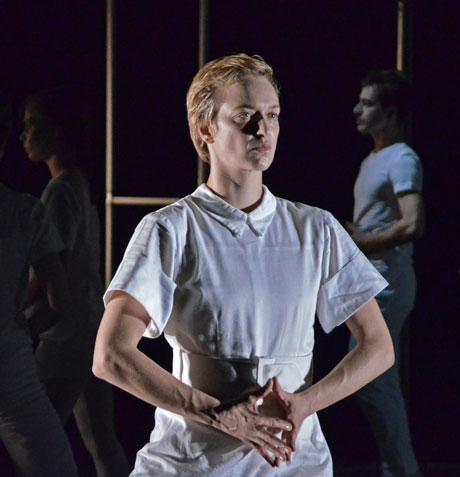
© Dave Morgan. (Click image for larger version)
The piece is set to music from the time of the real story, mostly by Vivaldi, a rational counterpoint to the confused emotion of the action; Jann Messerli’s set – a construction of linked metal frameworks which is reconfigured by the dancers to represent home or gaol, a secure interior or an impassable barrier – is ingenious as well as good to look at.
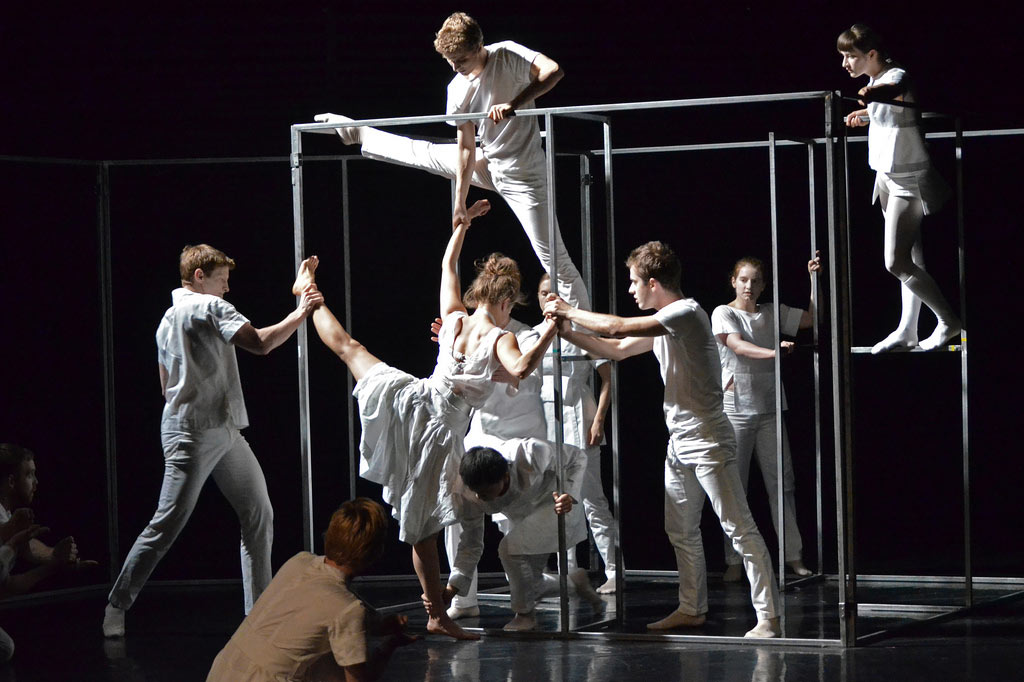
© Dave Morgan. (Click image for larger version)
I very much liked the way Marston uses her corps de ballet (there are 18 dancers in all), as commentators as well as characters in the action; and Martina Langmann and Franklyn Lee, as the child’s parents, had the gravitas to anchor the story in a bourgeois reality. Paula Alonso was completely convincing as the child, and Clemmie Sveaas as Anna Göldi gave a very fine performance indeed, winning our sympathy but just ambiguous enough to keep some little doubt in our minds right to the end.
In all, an intriguing, rewarding evening in itself, and one that I find myself still thinking about, days later.
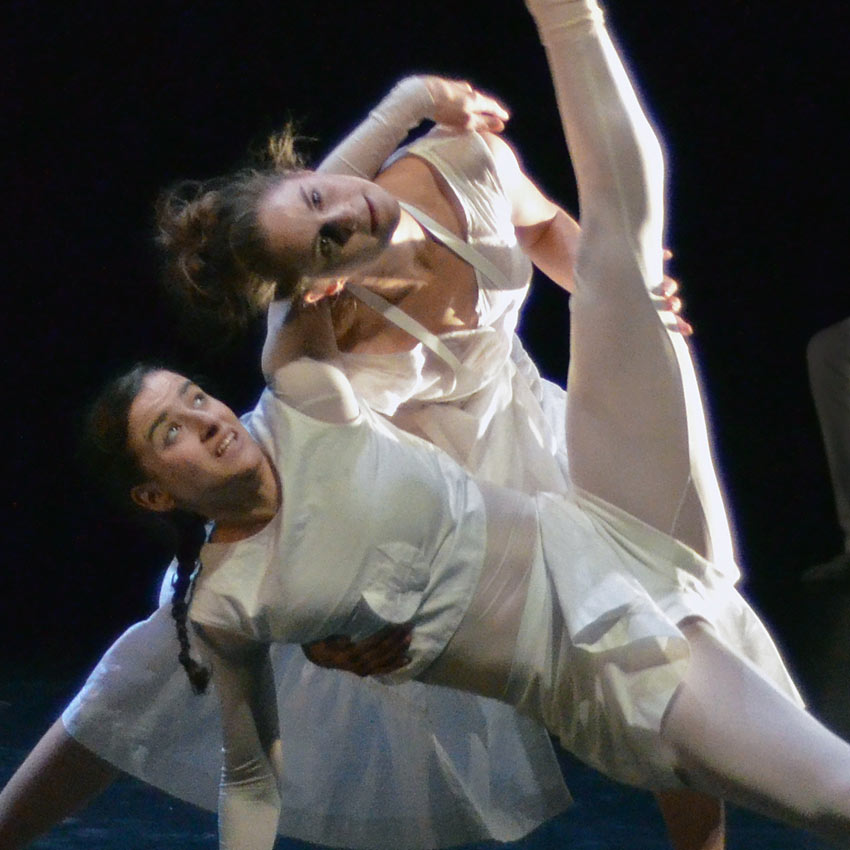
© Dave Morgan. (Click image for larger version)







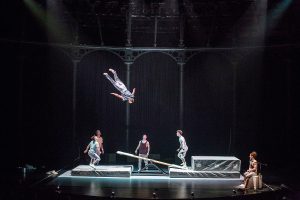

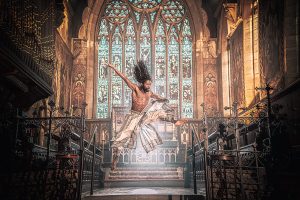

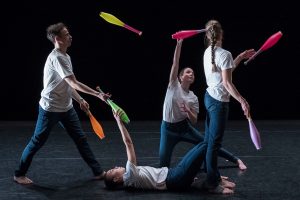

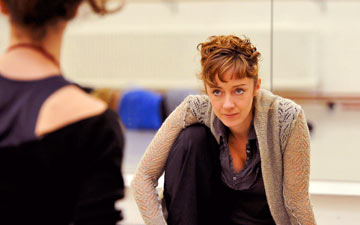
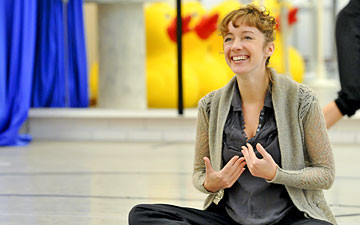

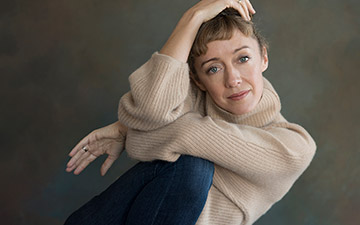
As with you, Jane, the significance of so much of this ballet continues to grow in my memory after two viewings last week. I’m an admitted Marston groupie, but I do think this last work for Bern is something rather special. And as Cathy finishes out there in a few weeks, it’s worth recalling that on her arrival in 2007 audiences were fairly unaccustomed to narrative work, as were most of her dancers, and I believe it took her ‘Julia und Romeo’ in 2009 to start changing the temperature. In the interim she found she had to lead a very public campaign to ensure the company’s future with financial grants about to reduce and, had she failed, it would probably have closed last summer. After all this, the irony is that a new Intendant at the theatre wants dance of a very different sort to that of the last six years and, whilst it might come as a surprise to most of us over here, she was considered to be insufficiently adventurous. So, to address your starting remark, it seems that the Bern audience will have to become used to something different from this summer.